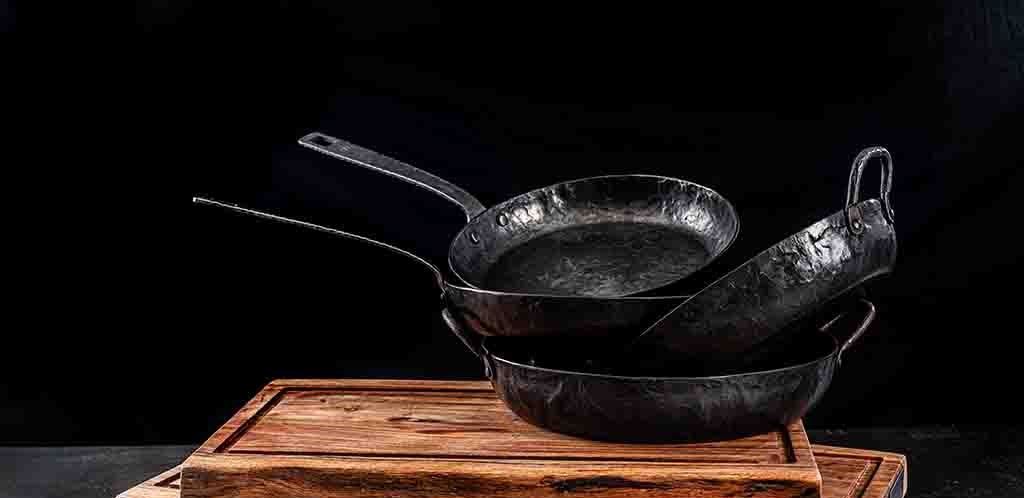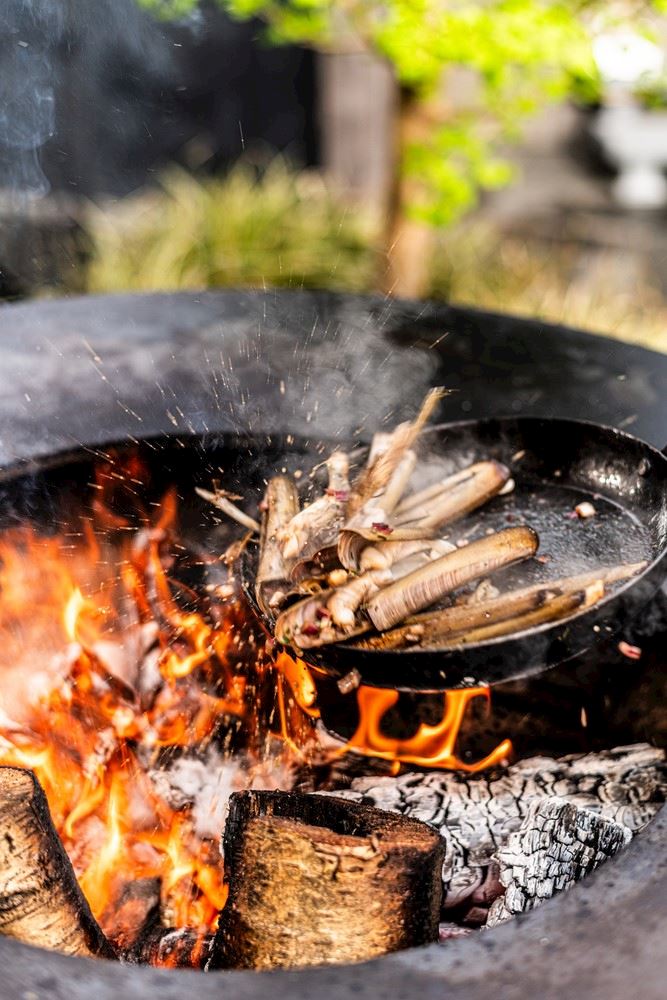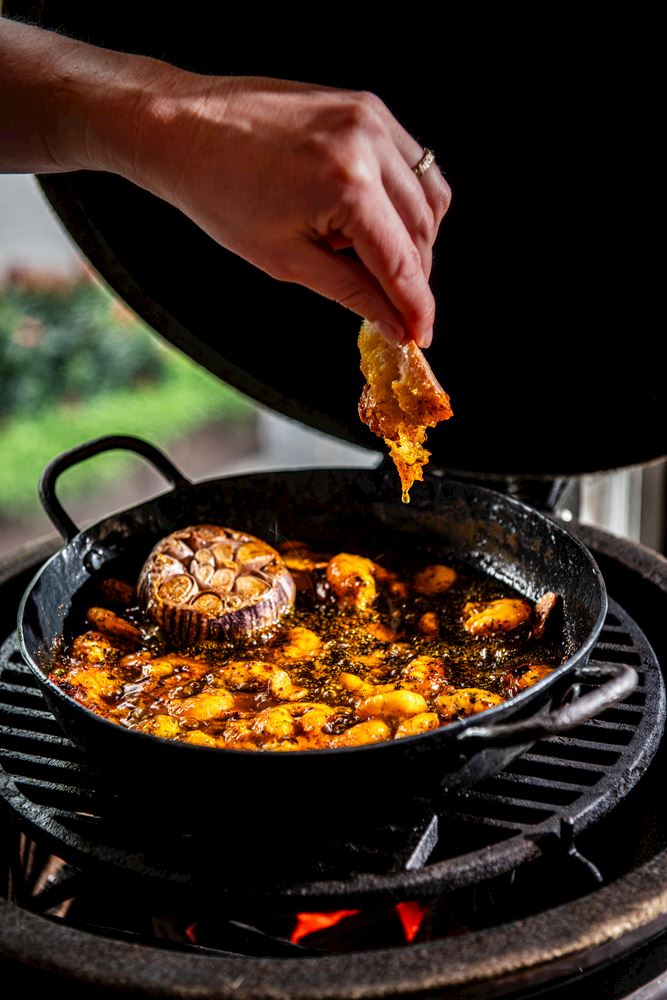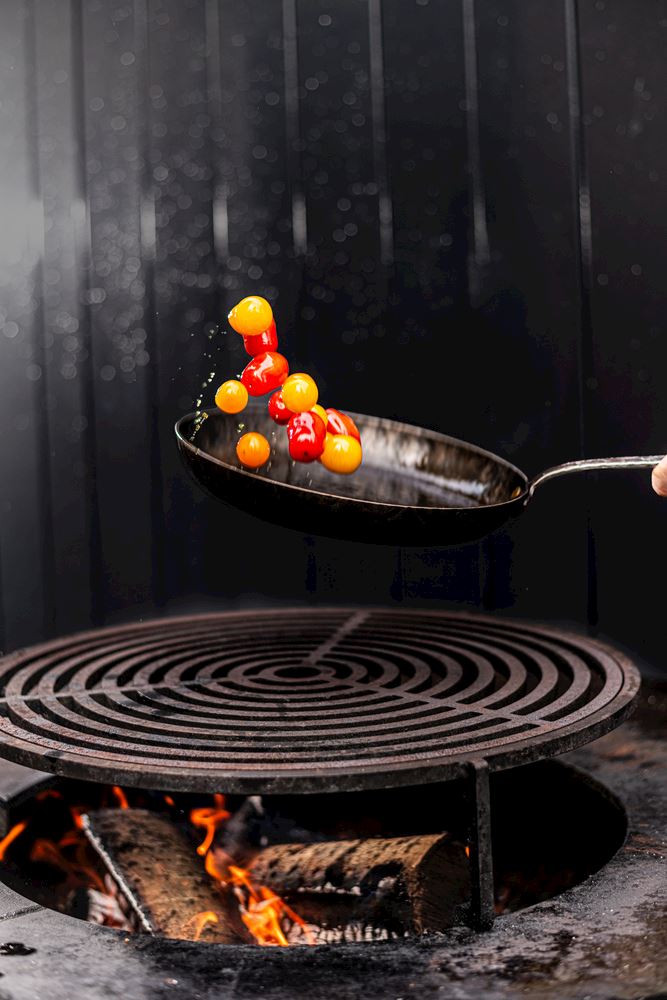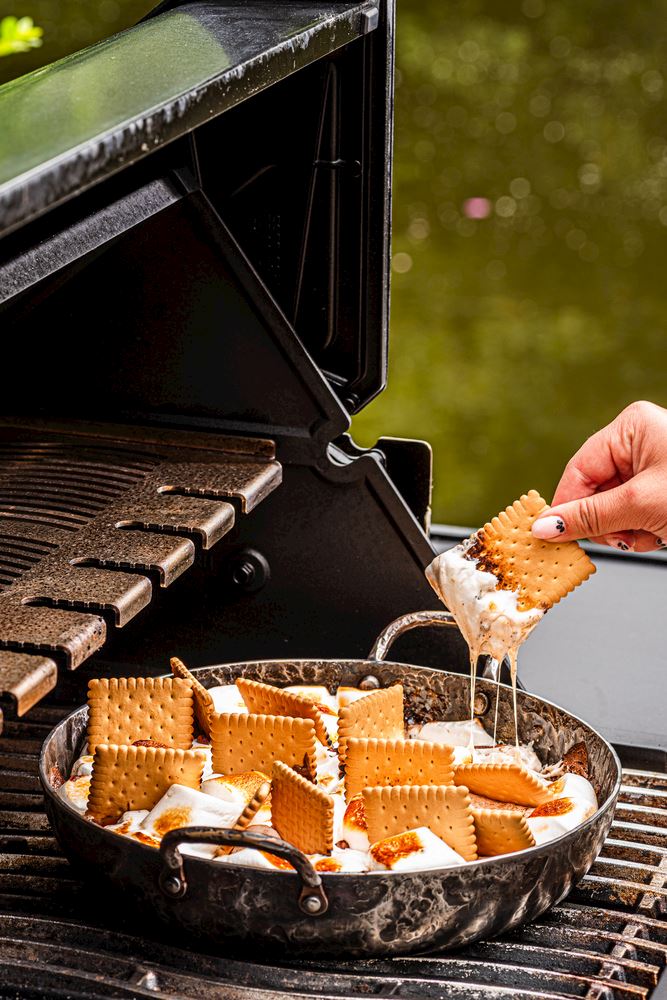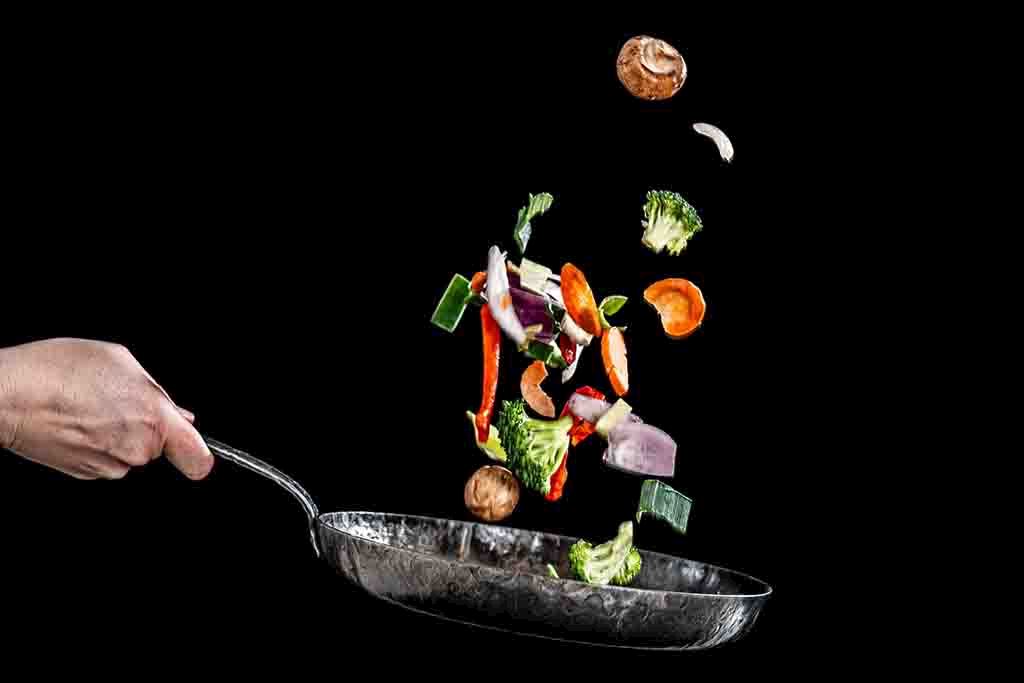
Properties
• Ø 24 cm
• Made of Carbon steel
• Thickness: 3 mm
• Forged by hand
• Not dishwashersafe
• Not suitable for microwave
• Suitable for all cooktops, including induction, oven,
open fire and BBQ
• Durable, with proper use it will last a lifetime
• Made of 100% steel, this makes it completely recyclable
• Suitable for stainless steel kitchen utensils
• PFAS free because it has a natural coating that YOU create
Important information
After use, let it cool down before holding it under running water. Hot water is colder than the temperature of the pan when it comes right off the stove. By letting the pan cool down first, you prevent the steel from getting a thermal shock, which is not beneficial for the pan and may even cause it to bend. Make sure you don’t use too small a heat source for the bottom with a ceramic or induction cooking zone. The bottom width should match the size of the pan. Besides the fact that heating up your pan is slower, there is also a chance that your pan will bulge slightly. Any material expands because the inside is hot and the outside is not. It may expand slightly upwards or downwards.
Do's and Don'ts
First use
Your frying pan comes with a natural oil coating from the factory. Wash it carefully with warm water, detergent and a dish brush. Refer to the “Step-by-Step Plan for Seasoning Your Pan” for guidance on seasoning it before its first use.
How to use
A steel skillet is a true all-rounder. You can make a perfect steak in it, as well as an omelet. If you would fry an egg, put the pan on medium-high heat at most. If the pan is not so fat yet, the food can get stuck a little easier. It is then important that there is enough fat in the pan so don’t be too economical with that. If this does not work and it is really stuck, then you probably do not have the right temperature. As the pan is used several times, the better you can then fry in it without sticking. For a steak, the skillet can be heated on a higher heat (not too hot, see next page). You can tell if the pan is at the right temperature if you put a few drops of water in the pan. When they begin to dance it is at a perfect temperature for your meat. Then if it is well heated just before you put the steak in at room temperature, put in a knob of butter or oil. If you do this too early, the butter will go too hard and burn. The higher temperature sears the meat well and gives a crispy crust on it and keeps it tender and juicy. At first, your meat will be able to stick to the pan, but leave it alone. After a while, most of it will loosen up and be nicely seared. Then you can turn your meat over.
Be careful not to heat the skillet with induction on 8, 9 or P. This can lead to overheating and burnt meat. This pan heats up very quickly. When it has cooled down sufficiently, clean it under a hot tap with detergent and a dish brush. Wipe it dry with a tea towel or kitchen paper. What you absolutely must not do! Do not put the pan in the dishwasher. Cleaning products such as dishwasher tablets and grease removers are a real no-go. These contain acids that your pan cannot withstand. Besides the risk that your seasoning is removed, you also have a high risk of rust afterwards. The pan will get darker as you use it. This will not cause any harm. At some point the pan will become almost black. The blacker the pan, the better the baking properties. It is the natural coating that you create.
Step-by-step plan to clean your pan properly
without detergent and a dish brush. It is also possible to use no water and clean it only with kitchen paper or a tea towel. The oil left in the pan again provides a seasoning layer and is meant to prevent your food from easily sticking next time. Store the pan cork dry and a little greasy. Make sure there are no drips left in it. You can also grease it after cleaning with a very thin layer of oil (e.g. groundnut or sunflower oil or the oil from the Forged maintenance kit). If there are stubborn spots that you cannot get rid of properly, you can soak the pan in hot water (this can also be done on the stove). After this the food remains will come off easier. Do not leave the pan in water overnight. Otherwise, the naturally obtained protective layer will be loosened and may rust. If this doesn't work, and there are still stubborn protein residues in it that really baked into it? Then do the following:
Step-by-step plan for seasoning your pan
To maintain your pan, it is a good idea to season it regularly. What does that entail?
If desired, you can repeat this step several times. The more often the pan burns in, the better your non-stick coating will become. But of course, you can also use it with oil or butter very often afterwards. That also works very well.

